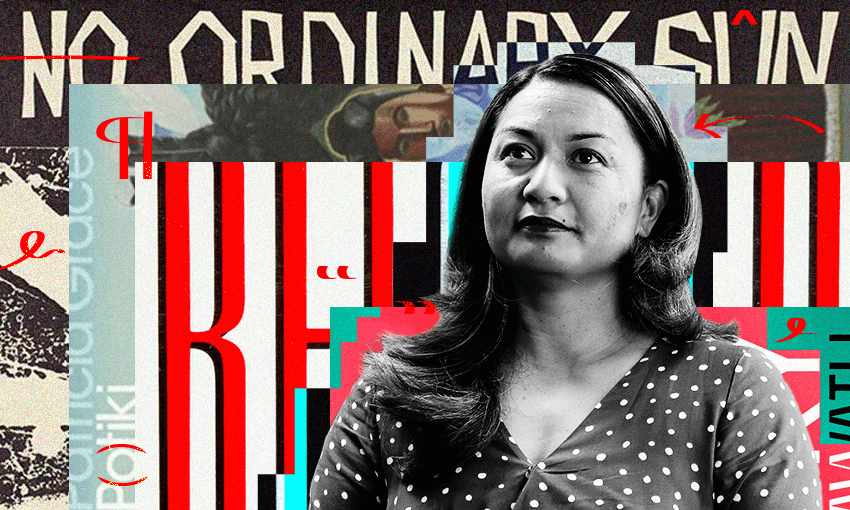Welcome to The Spinoff Books Confessional, in which we get to know the reading habits and quirks of New Zealanders at large. This week: Green Party co-leader Marama Davidson.
The book I wish I’d written
Potiki by Patricia Grace. It is a timeless commentary on the politics of colonisation and land loss, on whānau relationships and dynamics, on te ao Māori. Whaea Patricia’s writing lands like silk on the pages. Divine storytelling and analysis: it’s one of my favourite all time books ever. Definitely wish I had written it. The best I could do was write a high school essay about it, under the guidance of one of the teachers known as being the toughest marker in town. Getting that A from her was a wild achievement that I still hold on to proudly.
Everyone should read
Everyone should read … if they have the luxury to! Here I put up the brutal truth that as a minister of the Crown I spend so much of my working day reading endless papers that reading for enjoyment feels contradictory in downtime.
But during summer break, when I can truly switch off, I’ll pick something up. Auē by Becky Manawatu was another great read as well as a commentary on justice and systemic disadvantage, and hope despite huge challenges. Once you get going you won’t want to put it down.
The book I want to be buried with
I can’t see the point in taking a book with me to a place where no one else will read it? But a book that means so much to me that I’d want it to have it in my next realms is a photo book that I made in the old-school way. I shoved photos of my beautiful children and family into a clear file folder and it reminds me of a life lovingly lived.
The first book I remember reading by myself
The Paddington Bear books when I was very young: a primary-school-aged girl. I remember imagining the feeling of sticky marmalade everywhere and loved how the words on the page created a whole universe in my mind. I would consume those novels for as many hours at a time as I could get away with.
Fiction or Non-fiction?
Definitely fiction. Reading reports of real life every day means I’m mostly looking for escapism when I get the chance to read books. The exception is reading from the life experiences of those whose voices aren’t privileged with huge platforms or power. Those are inspirational stories seeking to inspire a better world.
It’s a crime against language to…
Be too snobby about language. I’m most entertained when people play around with words and structure and have fun.
It hurts my eyes when professional documents have typos and so forth, but for creative purposes – explore and play I reckon!
The book that haunts me
Beloved by Toni Morrison. I borrowed it from a cousin and can’t imagine the courage it took to write it. The book dives deep into the intergenerational violence of slavery in the America.
The book that made me cry
She Is Not Your Rehab by Matt Brown. A very personal and honest story of hurt, healing and hope. Matt and Sarah Brown are incredible leaders and I am always thankful for their wisdom and mahi in the prevention of violence space. Matt’s book is phenomenal.
The book that made me laugh
Dr Doolittle books always make me laugh! It has always been when I’m reading them to my children and mokopuna and you can’t read any of those books without enjoying the tongue-twisting language. They are delightful example of the magic of make believe.
Greatest New Zealand book
Very unfair question! No Ordinary Sun by Hone Tūwhare. And the title poem is one for the ages. What a tohunga for language.
Greatest New Zealand writer
Another unfair question because I love so many. I’ve already mentioned Patricia Grace and Hone Tūwhare so now I’ll cheat and add another one. Albert Wendt is a genius and will have my gratitude for life for ever setting pen to paper. His poetry floors me every time.
Best place to read
My Hokianga homeland on my summer holiday break. Our whare is surrounded by bush which provides beautiful and peaceful surrounds for reading and it normally means I get to have a proper break if I’m there. But if I can’t read there – then anywhere where I’ve got a cuppa tea and snacks and can put my feet up without distraction.
What are you reading right now?
Braiding Sweetgrass by Robin Wall Kimmerer. Indigenous wisdom which of course is essential to leading our way through the world’s crisis we are facing right now. Instructive poetry that reminds us of how intrinsically we are connected to each other and our planet.
You can purchase or order the books mentioned above at Unity Books Wellington and Auckland.



